|
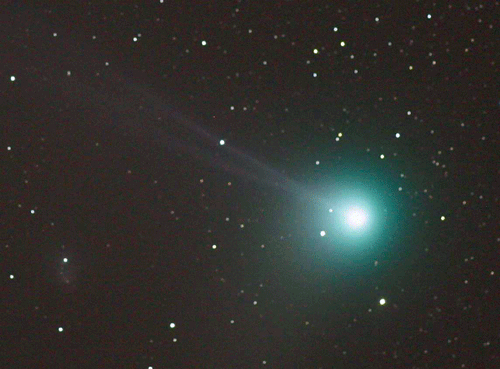 tb
tb
The Gif above shows the
movement of the comet in a time of 15 minutes
The celestrial way of the
comet

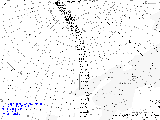
©Karten
mit freundlicher Genehmigung von Gregorio Drayer, Caracas Venezuela
1.11.05,
Last observations
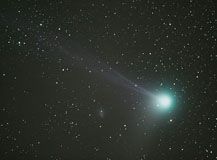
A nice surprise.
Long terme exposures let the dust tail appear bright an clearly. In dark areas
you have now the chance to see the tail very weak with the naked eye (~mag 3,5).
But the new moon phase make good observations and photos senceless in the
next days.
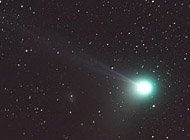
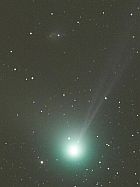
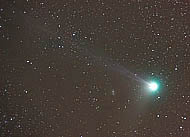 tb tb
Canon EOS 20 D, Nikon 300 mm f 1:4 Bel.3 x 120 sec,
ASA 1600,

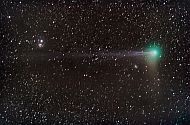
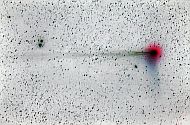 mr
mr
M.R; Canon EOS 300 D Nikon 200mm 2,0 30sec, f
2,8
8.1.05; The Plejades passage
of the comet
A very thin dust
tail touches the seven sisters constellation

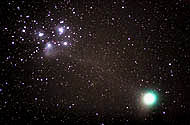 tb tb

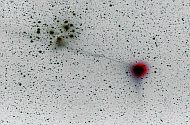 mr mr
mr
Canon EOS 300 D Nikkon 135 1:2,0
30sec
tb
Canon EOS 20 D, Nikon 300 mm
f 1:2,8 Bel.3x 120 sec, ASA 800
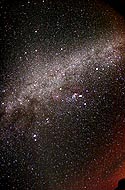


On the left image
Martin did hide the comet, where is it?
Photos taken
in the Central Sahara (South Algeria mr) and Germerswang near Fuerstenfeldbruck
tb
Photos from 1.5.05
(Fürstenfeldbruck, Bavaria)
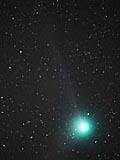
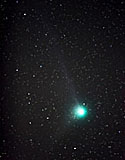

Canon EOS 20 D, Nikon 300 mm f 1:2,8 - 4 Bel.3x 90 sec,
ASA 800
The two tails (up
dust, downleft iones, ~mag 3,8).Do not worry, this view you can only reach by
the astro photography. Take magnifiying glases in a real dark area, may you can
see more details.
|
Auerberg (Bavaria) 14.12.04
The Comet Machholz is estimated by us with the brighness of mag 4.4.
On the 8th of January he will maybe get his highlight of 3,0 - 3,5 mag
or brighter. After 01.21.05 the comet is circumpolar, may you can
observe this object after the 31rst of Dec. during the whole night
with the naked eye .
|
|
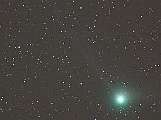 tb
tb
Canon EOS 300 D, Nikon 300 mm f 1:2,8 - 4 Bel.3x 180
sec, ASA 800 |
|
The dust tial with a length of 2° stands in an
angle of 120° (right) to the gas track |
Sudelfeld, Bavarian Alps, 10.12.04 |
 tb
tb
(TB)Canon EOS 300 D, Nikon 300 mm f
1:4 Bel. 150 sec ASA 800
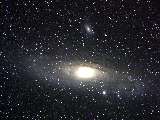
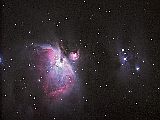

Go to deep sky
*mag
= > light magnitude:
Up to
mag +3-4 stars are visible nearby cities with
the naked eye, in very dark areas the seeing limit can reach up
to
mag +6-7.
The more higher numerical value is
given, the more weaker are the objects. E.g.
- 4,7 mag, Venus glittering;
- 1,0
Sirius, brightest star;
3,5
M31 Andromeda,
pale shiny oval)
|
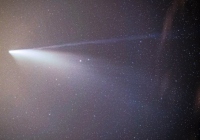         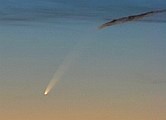 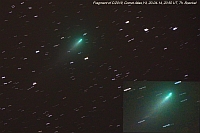 
All comet observations
from 2001 up to now ..
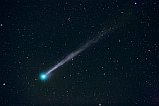   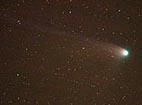        

Fürstenfeldbruck & Gilching
More about Machholz in
astronomie.de

|
|
Etna
Stromboli
Volcano world  Cinema Cinema
From Etna to Stromboli
Planets & Space
©2004 photos byM.Rietze
(MR)
and T.Boeckel (TB) last modification
24.1.05
This private, non-commercial web site
do not use cookies !
IMPRESSUM
PRIVACY
DATENSCHUTZ
|
|
























